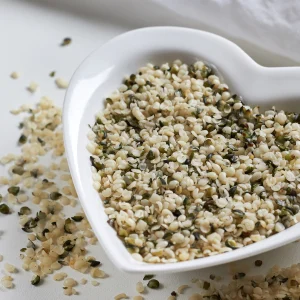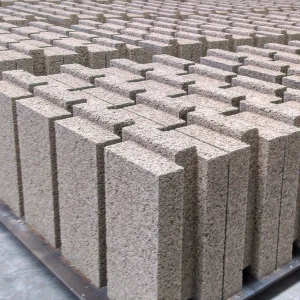Hemp for Plant-Based Products & Hemp Plastic Packaging
What is Hemp?
Hemp is a strain of Cannabis Sativa, but contrary to its other cannabis cousins, it has extremely low tetrahydrocannabinol (THC) concentrations. The level of THC in the plant makes it impossible to be used as a drug and can’t be used to alter your mind. The legality of hemp crops varies worldwide, but in general, only Hemp bred with an especially low THC content is permitted for commercial production.
Production of Hemp was banned in the United States in 1937 under the Marihuana Tax Act and in Canada in 1938 under the Opium and Narcotic Drug Act. Both of these bans were part of an international attack on substance abuse, and the crop was demonized because it comes from the same plant species as marijuana. Today more is known about THC and CBD and their effect on us. It is now widely understood that hemp crops do not yield the same potent THC levels and therefore have no psychoactive qualities.
Hemp Fibre Products

Hemp’s yellowy, brown, or gray fiber is solid and durable – an excellent substance for materials such as burlap sacs and/or composite materials, concrete, and alternative insulation. It is also promising for the formulation of recyclable and biodegradable bioplastics.
The nanocellulose derived from hemp fibers is a light, durable plastic-like substance up to eight times stronger than steel and even Kevlar. Hemp plastics are a natural polymer that could and should become the natural replacement for traditional plastic, which takes up to 450 years to break down.
Industrial Hemp Products
Hemp has been used for tens of thousands of years by people worldwide and was one of the first plants to be spun for use as textiles. Hemp is a highly versatile plant used to make an exciting variety of commercial and industrial products, including rope, textiles, clothing, shoes, food, paper, insulation, biofuel and plastics. Some say up to 25,000 products can be derived from this crop.
The plant yields interesting opportunities for the following Industries:
- Animal Care
- Textiles
- Automotive
- Furniture
- Food & Beverages
- Paper
- Construction Materials
- Personal Care
- Other
The plant’s stalk has an exterior layer of rope-like fibers used to produce textiles. In contrast, the inner layer is a woody pith perfect for creating fuel, building materials, and animal bedding.



Hemp Plastic Packaging

Hemp-derived cellophane, which is recyclable and biodegradable, is already attainable; it is the future of industrial packaging. This amazing opportunity will provide us with solid plastics which take less than six months to decompose fully.
Hemp bioplastic packaging companies have started to emerge and offer a variety of rigid bioplastic containers for CBD products, cosmetics, foods, etc. It is already possible to purchase Certified Compostable rigid containers, Stand-Up Pouches, and cellulose shrink bands for tamper-proofing containers. Food films in development now have high transparency, UV-blocking capacity, and possess antimicrobial properties which counter several types of bacteria.
A leading bioplastics technologies company headquartered in Los Angeles, U.S.A, uses hemp-based polymers to produce multilayer film packagings such as potato chip bags, toothpaste packaging, deli packaging, and various materials that require high barrier properties.
By 2030, 40% of the plastics industry will be bioplastics. Currently, production facilities and suitable recycling facilities specialized for hemp plastics need to be improved, and the industry needs to mature to make this possibility a reality sooner than later. According to Hemp Magazine, petroleum-based polypropylene pellets fluctuated between $1.00-$1.15 per pound in 2018. Market prices for Hemp plastics were around $2.35 per pound. The significant price difference is mainly attributable to importing costs. So, the faster we can cultivate locally – the quicker the plastic revolution can occur.
Hemp’s Ecological Benefits
Not only does this plant have the potential to replace every type of fossil-fuel plastic used today in industrial packaging – this crop doubles the benefits to our planet by sucking out four times more Co2 than any other plant, sequestering 15kg of Co2 per hectare! It can pull heavy metals like lead and cadmium from the soil while aerating the subsoil with its root system and requires little to no herbicide to grow successfully.
The key to utilizing Hemp to its most significant potential will ultimately come from how we farm the crop. Will it become yet another aggressively and industrially farmed commodity crop? To use it to its full potential would mean embracing regenerative polyculture stewardship methods which could heal the earth.
Hemp’s Potential for the Packaging Industry
Hemp definitely has always had huge potential to transform our everyday lives. Since regaining its status as a legal crop, the supportive scientific research community is ensuring that it is poised to become a very impressive bioplastic that would benefit the world. As this crop becomes increasingly harvested in the US and Canada, it will open new doors for bioplastics and the Packaging Industry with more eco-responsible solutions for various manufacturing applications.
While the actual adoption and implementation of hemp plastics in packaging will depend on factors such as market demand, technological advancements, and regulatory considerations, it is a very interesting bioplastic that should be strongly considered. Its unique characteristics make it a good material for biodegradable material blends or to be supplemented with additives to meet specific packaging requirements.
Hemp-derived bioplastics could be used to manufacture more biodegradable containers, trays, and wraps because their barrier properties could be used as a better alternative to petroleum-based plastics to lock in food freshness. It is also a great candidate for mixed material flexible packaging solutions such as pouches and bags.
Of course, to achieve widespread adoption of hemp plastics in the future, further research and development will be needed to optimize their performance, cost-effectiveness, and scalability. While the possibility of hemp-based plastics is enormous, we have to wonder whether the lingering villainization of hemp of the past decades will play against the promise this crop holds for the future of packaging.
6 Key Factors to Consider when Buying a Premade Pouch Filling Machine
Modern Pre-Made Pouch Baggers are growing in popularity with brand owners and retailers ov...
A Guide to Automated Bagging Machines
in Bagging, OptimizationDive into the realm of automated bagging machines! Discover the most common bagging soluti...
Accurate, Hygienic Liquid Fillers in North America
in FillingCut product giveaway, streamline hygiene compliance, and handle complex textures with ease...





